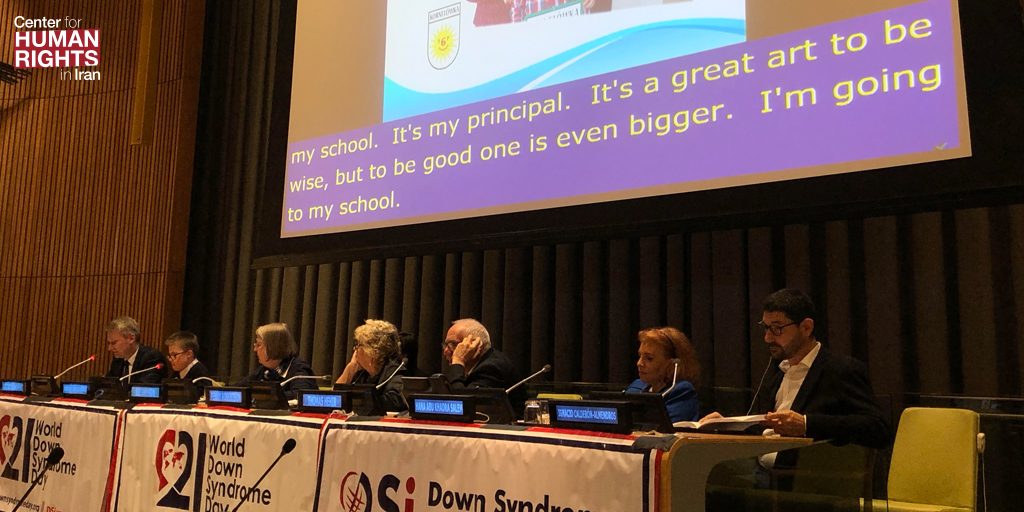Leave No Child Behind: Providing Inclusive Education to Children With Disabilities
 |
| The UN held a conference focused on improving access to inclusive education for children with disabilities on World Down Syndrome Day (2019). |
MARCH 28,
2019
Among people with disabilities,
individuals living with intellectual disabilities experience the highest degree
of discrimination when it comes to accessing education, noted attendees at an
UN-hosted conference in New York on World Down Syndrome Day, March 21, 2019.
“To achieve the goal of
inclusive education, we must recognize the human dignity of these individuals
and believe in their abilities to participate and be present in society,” said
panelist Rosangela Berman-Bieler, UNICEF’s representative for children with
disabilities.
The conference concluded with
an announcement that international guidelines on the implementation of the UN Convention on the Rights of
Persons With Disabilities (CRPD)—which would also address inclusive education
for people with disabilities—would soon be made public.
How to Provide Inclusive
Education
Children with disabilities are
severely disadvantaged when it comes to their human and civil rights, noted
Berman-Bieler, who stated that 50 percent of children with disabilities around
the world are not enrolled in schools while those who are registered are
exposed to lower quality education than their peers.
“That is why education is so
important for these individuals, so they can achieve independence as well as
become aware of their rights,” said the UNICEF rep.
Berman-Bieler added that
inclusive education involves not only ending the segregation and isolation of
children with disabilities but also facilitating higher quality education for
them based on guidelines involving special training for educators as well as
best methods for educating children with disabilities, including Down syndrome.
Reps from several countries,
including individuals living with Down syndrome as well as legal and social
activists, were also in attendance.
Harvard Professor Thomas
Hehir pointed to research showing that children educated in general or
mainstream schools schools exhibit higher graduation rates and abilities to
conduct an independent life than children enrolled in “special” schools.
Emphasizing the importance of
properly training educators on how to deal with children with disabilities he
added, “Teachers should feel that the presence of students with disabilities
makes them better teachers.”
Another panelist, Ignacio
Calderón, a professor of education at the University of Málaga in Spain, noted,
“It is not Down syndrome that causes harm but the main harm stems from
discrimination against individuals with Down syndrome.”
Brazilian social entrepreneur
Rodrigo Mendez described the basic characteristics of an inclusive school as:
1.
Avoiding segregation
2.
Implementing a holistic approach to diversity and differences
among students
3.
Providing inclusive, equal, high-quality education to all students
4.
Focusing on developing the unique abilities of each student
5.
Considering students’ living conditions
Maintaining constant
communication with students and their guardians
“The realization of inclusive
and equal education for children with disabilities is a crucial step in the
struggle against poverty,” noted Sue Swenson, the president of the
US-based Inclusion International organization.
“All people in society,
regardless of the issue of disability, have the right to employment and
participation in society,” said Swenson.
No comments:
Post a Comment